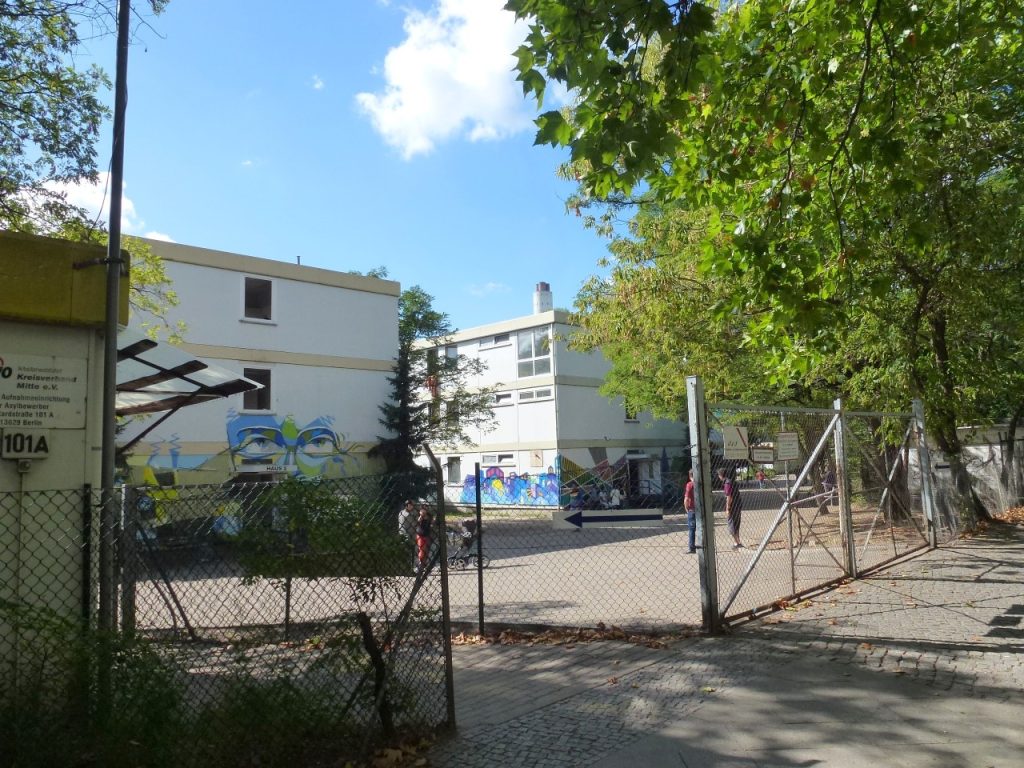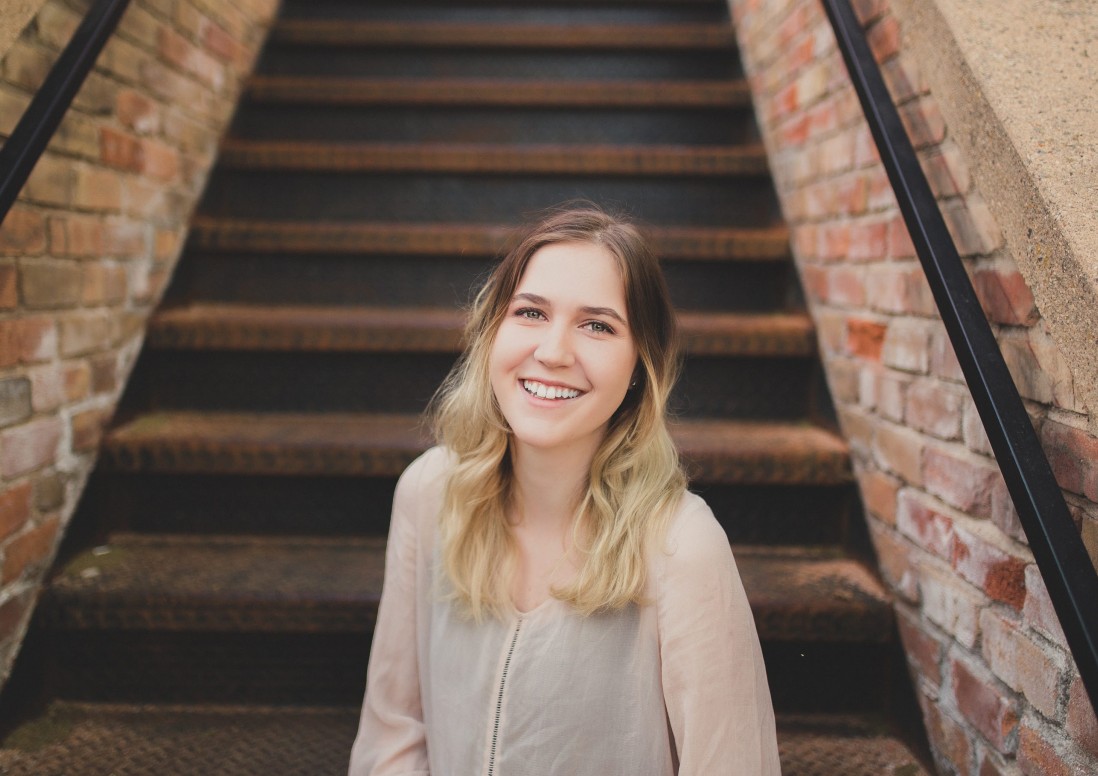
When his father passed away two years ago, Ulrich Brückner drove a truck full of his dad’s belongings from Würzburg to Merseburg. After the three-hour drive in sweltering summer heat, he began to unload the furniture that would furnish the new home of Nilufar, her husband, and their two little children. They had arrived in Germany from Afghanistan a little over four months prior.
Brückner, a professor of European studies at Freie Universität Berlin and Stanford University in Berlin, met Nilufar in 2008 when she was in a class he taught for foreign diplomats. They stayed in contact after she returned to Afghanistan, right up to the point that the Taliban took over and she and her family landed in Hanover – this time as refugees.
They were assigned to live in Saxony-Anhalt via the Königstein Key, an algorithm that distributes asylum-seekers amongst the different German states based on tax revenue and population. The job center provided them with money, clothes, and a spot in a refugee shelter, but they were told it was up to them to find long-term housing.
Brückner helped them look for a place in Merseburg, but despite being a shrinking city with plenty of housing available, he said that existing residents were hesitant to make it a destination for refugees. Brückner applied for tens of apartments on Nilufar’s behalf, but was met with one closed door after another.
“It helped to be Professor Brückner and to be fluent in German and know how to talk to people, but when I then unmasked and told them what I was working for the appetite was not very strong,” he explained.
By the end of 2016 nearly 5.2 million refugees had arrived on Europe’s shores from Syria, Iraq, and Afghanistan. Nearly one million of those sought asylum in Germany, and Berlin alone sometimes received over 10,000 refugees in a single month. Germany has continued to take in refugees since that time in 2016, averaging around 210,137 new asylum applications per year, not including the 1.2 million Ukrainians in Germany that are categorized under a separate, special protection status.
Ultimately Nilufar and her family secured a spot in public housing, but their story demonstrates the difficulty that migrants and refugees face in finding a place to live in the country that initially welcomed them with open arms.
It is even more challenging for those seeking a place in large cities like Berlin, where an acute housing crisis has meant that many refugees are still waiting in shelters or contractual housing, unable to find something more long-term.
According to Berlin’s State Office for Refugee Affairs (LAF), as of January 2024 there were 34,361 refugees living in LAF contractual accommodation, 3,612 of whom were in “emergency accommodation or hostels,” with an additional 5,500 accommodated in the two refugee arrival centers in the city.
An unknown number of refugees ultimately also end up in district-level shelters, explained Anne-Marie Kortas, a policy advisor for the Berlin Senate Department for Labor, Social Services, Gender Equality, Integration, Diversity and Anti-Discrimination.
After receiving an official status, refugees ideally move into their own apartments or transition from the state-sponsored LAF shelters to district-level ones within the city, which provide them with accommodation, possibly alongside Berlin’s unhoused population, she explained.
Kortas noted that the city is establishing a process to collect data on how many individuals are in district-level housing. Having a multilevel bureaucratic structure with independent district departments, she said, means there is a need to unite various systems before being able to have a full overview.
A lucky few in LAF contractual housing are placed in apartments via Berlin’s Apartments for Refugees Program, in collaboration with state-owned housing companies, but these placements are also decreasing – last year by 50 percent.
Many refugees have no choice but to navigate the city’s strained housing market in hopes of finding a place to call home, but they are met with a mountain of challenges. In the last seven years alone rent prices have gone up by 44 percent, and housing has become so scarce that residents liken finding an apartment to winning the lottery.
Brückner explained that, while Berlin has gained over 400,000 residents in the past few years alone, construction has not kept up with the population surge. The percentage of single households has also increased – as of 2022 it had climbed to 55.8 percent.
Berlin is a city of rentals, with long chains of subletting for any given apartment. Lea Baro, a 27-year-old PhD student at Humboldt University in Berlin, explained that an old, cheap rental agreement has essentially become equivalent to owning a house due to the strength of renter protection laws.
“If you live there ten years or more it’s very difficult to get you out,” she said. But this makes it hard if you are just starting out in the city, she explained further.
The complexity and bureaucracy of getting a housing contract also disadvantages those without official documents, German language abilities, or personal connections. Within minutes of posting an open apartment on online platforms such as ImmoScout24, people might receive hundreds of applications. To have a chance one often needs not only a compelling story, but a slew of official documents such as a SCHUFA score (the equivalent of a credit score, nebulously calculated by a private company), proof of identity, and a German bank account.
Iwona Wojdyła, who moved to Germany from Poland in 2012, spent six years working with refugees in various shelters across the city. She explained that the ability to navigate this system also differs within refugee populations. Those who come to Germany with connections or who are well-educated and speak English, she noted, are the first to find apartments.
“We had people who could find something after seven months, but I also know people who are still in a refugee camp after eight years, and they will probably never find something else,” she said.
Organizations like Wohnbrücke Berlin-Mitte have emerged since 2016 to help migrants and refugees find housing in the city. Evaan Alfarwan, who came to Germany from Syria in 2016, has worked at Wohnbrücke since 2021 alongside his studies at Humboldt University.
Alfarwan explained that those who have lived in shelters for years may have no idea how to successfully find an apartment, and that many of those who come to the organization for help have been victims of fraud.
“People exploit the situation,” he said, “and on the receiving end of it are refugees who lack the knowledge, but have a real need.”
Beyond the bureaucracy and exploitation, Alfarwan also noted the impact of discrimination in receiving a housing contract. Specifically, he said that refugees and migrants were often rejected because of their foreign-sounding names.
This is corroborated by numerous studies. In 2018 data journalists at BR Data and Spiegel Online conducted an experiment in which they sent out a total of 20,000 fictitious apartment inquiries, all identical except for the name. They found that Arabic names received 27 percent fewer apartment viewing invitations than German names, and Turkish names received 24 percent fewer invitations.
Discrimination in general has come to the forefront the past two years, especially as asylum-seekers witness the different level of resources offered to those who fled Ukraine.
Alfarwan and the others working at Wohnbrücke quickly noticed how differently Ukrainians were handled, particularly in the widespread availability of Ukrainian-language resources and documents, compared to other languages such as Arabic.
Baro put it in starker terms, explaining that – for all the talk of capacity problems or tolerance levels being reached – the willingness of Germans to open up their homes to refugees from Ukraine spoke to deeper societal issues.
“If we look at 2022, I think that’s the moment where we really saw that it was about racism, and not about anything else,” she said.
While Kortas stated that Ukrainian refugees are not provided more resources at the city level, she acknowledged that some private landlords might discriminate, or choose the applicants that look most like them or who they know personally.
Despite the myriad challenges, and the lack of housing, Berlin has remained a magnet for refugees and migrants alike.
This is in part due to the fact that it is already Germany’s most diverse city, boasting large Turkish, Arab, Russian, and Vietnamese populations. To understand the city’s reputation as a ‘melting pot’ one need only walk down the streets of Neukölln, a working-class neighborhood with a history of immigration that stretches back to the 18th century.
Not only do these diverse communities offer support networks and informal labor opportunities, but they also foster a sense of belonging in an otherwise foreign land.
Alongside her PhD program, Baro has worked at the German Center for Migration and Integration Studies since 2021. One of the research projects she worked on was with queer migrant communities, exploring what makes them feel represented in the city. Neighborhoods like Neukölln and Kreuzberg came up a lot, she said, as a place in which migrants felt most comfortable.
“They felt like they shared some form or feeling of marginality with people that were there. A shared non-Germanness and being perceived as foreigners together, and as different, was what made them feel most comfortable in these neighborhoods,” she explained.
This applies to refugees, too. Via the Königstein Key many refugees are sent to more rural states or smaller cities that have more housing available, especially for families, but it is often harder to integrate and find jobs.
While larger refugee families might look to smaller towns for a better chance at finding housing, cities like Berlin have an undeniable “pull factor.” Not only are there better social networks and opportunities for study and work, but Berlin’s status as a modern city – one of the largest in Europe – also makes it attractive for young adults, the primary demographic of asylum seekers in Germany.
To accommodate these newcomers looking to find a place in Berlin, the city has expanded its temporary accommodation for refugees. The city recently announced plans for 16 new “container facilities” – old shipping containers refurbished into apartments – that will host an additional 6,130 individuals and families.
But there is much more to be done, explained both Alfarwan and Baro.
Alfarwan said that, alongside their work helping refugees find housing, Wohnbrücke formulates and sends suggestions to the district office for how to improve the housing situation for refugees. They rarely get a response, he noted.
“I think they need to look at long-term solutions,” he said.
He listed building more new apartments, or even repurposing old buildings into new apartments, as ways of alleviating the crisis moving forward.
Baro also stated the need for simplifying the housing search and removing some of the bureaucratic hurdles – specifically the complex array of documentation needed for housing applications and jobs.
Kortas believes that, beyond construction, a major challenge could be coordinating with the many small-scale landlords in Berlin and figuring out how to incentivize them to rent out more spaces to refugees and migrants.
“In Berlin there are a lot of landlords who own a few buildings. If we want to cooperate with private landlords, one has to invest time and human resources,” she said.
In the meantime, refugees end up bearing the cost of these challenges, but in an unfamiliar land finding housing is one obstacle they could do without, said Wojdyła.
People often forget that, for many of these refugees, the country they came from may not exist in the same way it did before, she noted.
“You need to start something new, but you don’t have time to process or think about it because you need to go from one office to another,” she explained – just to find a place to call home.

